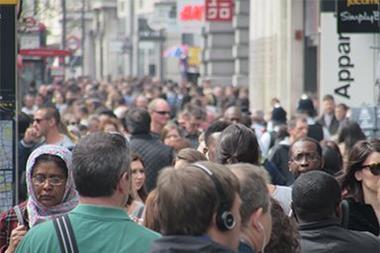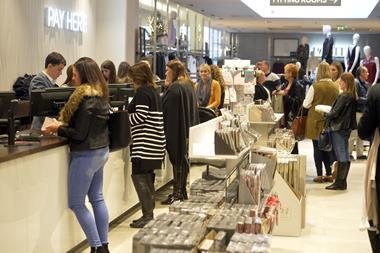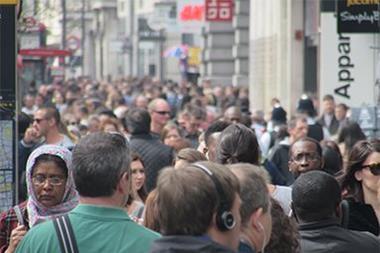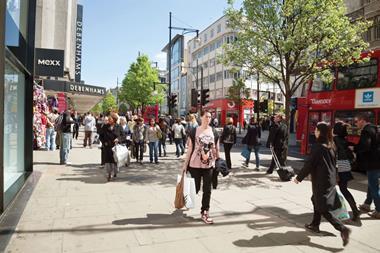Overall shopper numbers fell last month at the steepest level since January as consumers start to rein in spending on non-essential items.
Footfall slipped 1.1% year-on-year in the four weeks to July 29, according to the latest figures from the British Retail Consortium (BRC) and Springboard – a sharper drop than the three-month average decline of 0.4%.
This was driven by fewer shoppers at high street destinations, where footfall was down 2.1% despite fairly stable growth in recent months, and at shopping centres, down 1.3%.
Retail parks faring better
The exception was retail parks, where footfall advanced 1.7% last month.
Out of town shopping locations have fared relatively well since March this year.
BRC chief executive Helen Dickinson said this reflected, in part, lower rental costs compared to prime and town centre locations, as well as convenience for shoppers.
Springboard marketing and insight director Diane Wehrle added that while there was a drop in fashion sales last month, consumers increased their spending on products for the home, of which retail parks were the beneficiaries.
Region by region, the East and the South East were the only two UK locations where footfall rose last month. Shopper numbers declined most steeply in the South West and Greater London – both down 2.1%.
Reduced leisure spend
Wehrle said July’s results could mark “a sea change” in consumers’ willingness to spend, as it was the first time since January that footfall dropped during both retail trading hours and into the evening.
“Over the past few months the growing importance of the leisure based trip has become a key part of the narrative when talking about retail destinations, but a 0.5 per cent drop in footfall post 5pm in July is the first evidence of a tightening of purse strings on casual dining and leisure trips,” she said.
Outlook – period of restraint
Looking ahead, Wehrle said: “These results, together with the high level of consumer borrowing and an increase in the vacancy rate to 9.6% from 9.3% in April, suggest that trading conditions could be reaching a tipping point into a period of restraint.”


























No comments yet